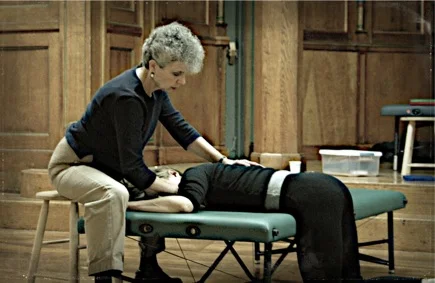The Feldenkrais Method®
“Movement is life. Life is a process. Improve the quality of the process and you improve the quality of life itself.” – Dr. Moshe Feldenkrais
The Feldenkrais Method uses our brain’s capacity to learn. For the child to become a functioning, independent adult, she/he needs to do an immense amount of learning. Very early on, the infant is focused on learning to move and negotiate gravity until it can walk, run, hop and jump. This is done without instruction. The movements are random and produce sensations that the brain can organize into intentional, directed action. How is this done? How can we use this capacity for learning to reverse the results of faulty education and bad habits?
To answer this question we must first experience and understand how faulty learning happens. We must sense the difference between movements that result in pain and frustration, and easy, effortless actions that feel pleasurable and effective. Babies, toddlers and young children do not learn unless they experience pleasure, satisfaction and freedom. The freedom to fail is particularly important for a young person's progress. Denied such freedom, many young people will stop trying and retreat. Without a real connection to their own internal and external sensations, young people withdraw from learning. This kind of withdrawal happens to many of us when we enter into academic settings that don't respect our need to learn by moving.
With his Method, Dr. Feldenkrais succeeded in replicating the sensory-motor learning of babies as a way to reverse the effects of faulty learning in people of all ages. He used his understanding of motor development, neuroscience and engineering to create thousands of movement lessons that he called Awareness Through Movement® lessons. He observed – and the latest discoveries in Neuroscience confirm – that improved movement is possible at any stage of life and often results in improved cognitive functioning as well.
“The Feldenkrais Method is the most sophisticated and effective method I have seen for the prevention and reversal of deterioration of function.” – Margaret Mead, anthropologist
The Method is taught in 2 ways:
Awareness Through Movement® lessons:
"Windmill" ATM lesson led by Helen Singh-Miller of Aesthetic Relational Exercises (ARE)
Awareness Through Movement (ATM) lessons are done on the floor, in sitting or standing. The movements are gentle, allowing the students to feel how much unnecessary effort they use, where in their body they apply this effort, and what other options they might have to make movement easier. The movements are based on the feedback loop mechanism of the brain – having an intention, carrying it out, sensing the quality of the action, evaluating the results and changing the action accordingly.
The lesson might start with a movement most students would find awkward to do and end with a quick, graceful execution of the same movement! No muscles have been strengthened, no imitation has been encouraged. The Trainer does not demonstrate the movements but rather dictates a few well-researched hints to help the person figure it out themselves. Just like a child would learn, given the right conditions.
“To make the impossible possible, the possible easy and the easy aesthetically pleasing." – Dr. Moshe Feldenkrais
Functional Integration® lessons:
Functional Integration is a hands-on approach used when people need personal attention. The reasons for this approach are many – a person might have too much pain in moving on their own, they might have referred nerve pain or partial paralysis due to Stroke, Multiple Sclerosis or Cerebral Palsy, for example. Some performers, especially when they have performance related injuries, benefit from movement tailored to their particular art or instrument – musicians, painters, dancers and athletes, for instance.
The practitioner guides the student with his/her hands, skillfully finding the areas which are the most neglected in the student’s movement patterns. These areas are often missing from the student's internal image of herself and the movements she makes. Through touch, these areas can “wake up” and become available to the student. For example: a muscle is tense in the shoulder area and causes pain. One could just tell the student to release it... but the student has no idea that she is contracting the muscle in the first place. Therefore she doesn’t know how to release it. The practitioner is carefully trained to be sensitive to the smallest gradations in muscle tone and to detect what movement is needed for the brain to take note and control the action of this muscle.
These lessons are mainly done in lying or sitting. They are very pleasant, informative and educational. People report:
• Feelings of ease and lightness
• Being taller
• Reduced pain
• New ways of coping with pain
• Increased range of movement
• Enhanced athletic and artistic performance
• Quicker recovery of abilities following trauma
• Increased mental clarity
• Overall vitality






